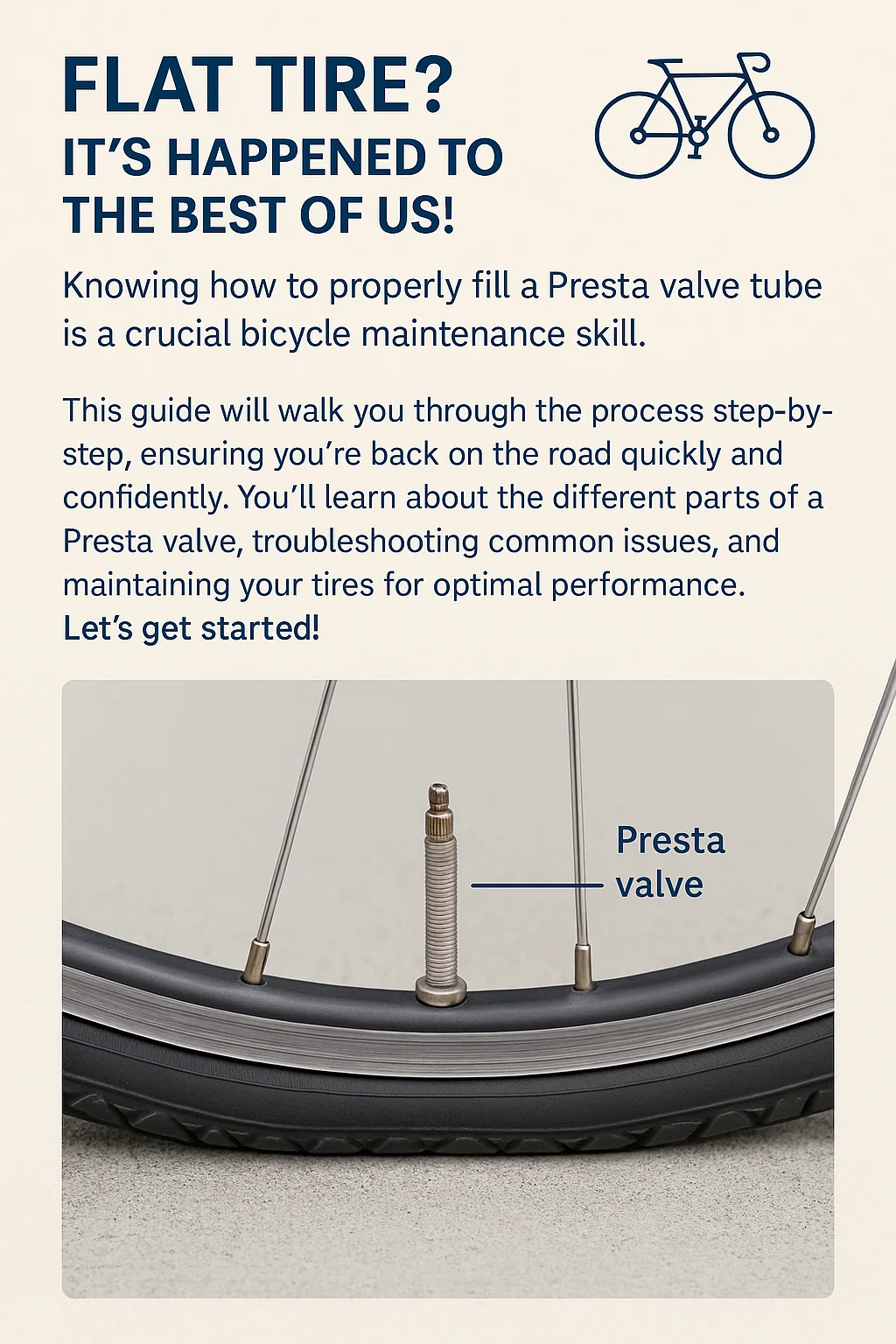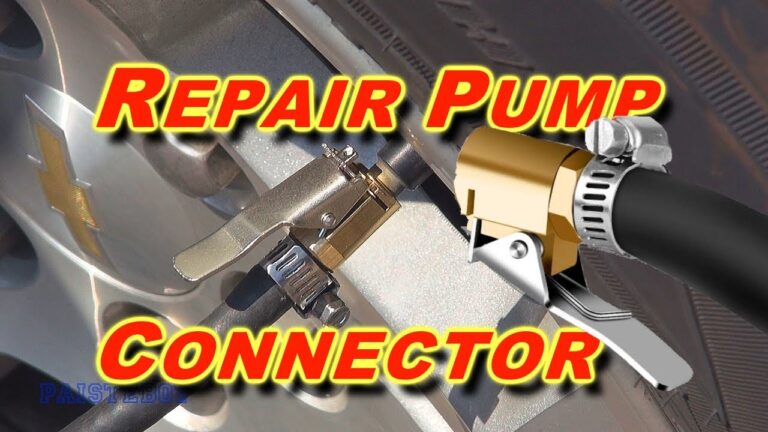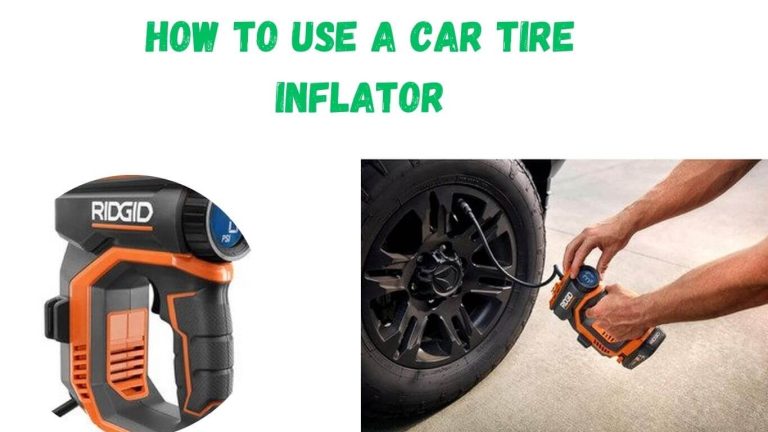How To Inflate A Presta Valve Bicycle Tube
Flat tire? It’s happened to the best of us! Knowing how to properly fill a Presta valve tube is a crucial bicycle maintenance skill. This guide will walk you through the process step-by-step, ensuring you’re back on the road quickly and confidently. You’ll learn about the different parts of a Presta valve, troubleshooting common issues, and maintaining your tires for optimal performance. Let’s get started!
🛠️ What You’ll Need:
- A bike pump compatible with Presta valves (or a Presta-to-Schrader adapter)
- Your bike with a deflated or low-pressure tire
Understanding Presta Valves
This section will explain the anatomy of a Presta valve, the different components, and how they work together to inflate your bicycle tire. You’ll also learn about the key differences between Presta and Schrader valves.
Presta Valve Anatomy
- Valve Stem: This is the long, thin part extending from the rim. It’s designed to precisely control air flow, making it superior for higher pressure tires commonly found on road bikes. A small valve core is contained within, acting like a gate for the air.
- Valve Cap: This protects the valve core from damage and dirt. It’s crucial to keep this tightly screwed on to avoid air leaks.
- Valve Core: This is the tiny component inside the stem. It controls the flow of air into and out of the tube. This is the part that is opened or closed to inflate or deflate the tire. A small tool or even a pen cap can remove it for easy cleaning or in case of a clogged valve.
- O-ring: Located beneath the valve cap. This small rubber ring ensures an airtight seal, preventing leaks around the valve stem. Check regularly to ensure it’s intact and undamaged.
Understanding these parts will help you effectively fill a Presta valve tube and prevent problems.
✅ Step-by-Step: How to Inflate a Presta Valve Tube
1. Remove the Valve Cap
Unscrew and remove the small plastic cap at the top of the valve. Don’t lose it—it protects the valve from dirt and debris.
2. Loosen the Valve Core
Gently unscrew the small knurled tip (valve core) at the top of the Presta valve until it stops turning. You don’t need to remove it—just loosen it.
🔧 Optional: Briefly press down on the valve tip to release a small puff of air. This ensures the valve isn’t stuck.
3. Attach the Pump
Use a Presta-compatible bike pump and:
- Place the pump head onto the valve
- Secure it by flipping the lever on the pump (if it has one)
⚠️ If your pump only fits Schrader valves, use a Presta-to-Schrader adapter.
4. Pump Up the Tire
Pump air into the tire while watching the pressure gauge. Stop once you reach the recommended PSI (usually printed on the tire sidewall).
💡 Road bikes: ~80–130 PSI
💡 Mountain bikes: ~30–50 PSI
5. Detach the Pump Carefully
Release the lever and remove the pump straight off the valve to avoid bending it.
6. Tighten the Valve Core
Screw the valve core back down to seal it.
7. Replace the Valve Cap
Put the cap back on to keep the valve clean.
How to Fill a Presta Valve Tube
This section provides a comprehensive, step-by-step guide on how to properly inflate your bicycle tire using a Presta valve. We’ll cover using both hand pumps and air compressors.
Inflating with a Hand Pump
- Unscrew the valve cap and gently push down on the valve stem’s small pin to release the air pressure if any.
- Firmly push the pump head onto the valve stem. Ensure a snug fit to prevent leaks. The pump head should make a secure connection with the Presta valve, maintaining a tight seal during inflation.
- Begin pumping. You may need to apply a little more pressure initially to create a proper seal.
- Monitor the tire pressure using a pressure gauge. Stop inflating when you reach your recommended tire pressure (printed on the tire sidewall).
- Once inflated, remove the pump head and screw the valve cap back on.
Inflating with an Air Compressor
- Unscrew the valve cap. Some compressor nozzles require this, while others can inflate directly on the valve.
- If you use an adapter, attach it firmly. If not, carefully place the nozzle directly onto the Presta valve stem.
- Turn on the compressor and monitor the pressure gauge. Again, aim for the PSI stated on your tire sidewall.
- Turn off the compressor when you reach the desired tire pressure.
- Carefully remove the nozzle and replace the valve cap.
Troubleshooting Common Issues
- Air leaking around the valve stem: This usually indicates a problem with the O-ring. Try replacing it with a new O-ring. Also, ensure the valve cap is properly screwed on.
- Valve core not allowing air in: This can happen from dirt or damage. Try removing the valve core (using a small tool), clean it, and then reinsert it. If the issue persists, you may need to replace the valve.
- Pump head not making a good seal: Make sure the pump head is properly seated on the valve. Sometimes a little extra pressure is needed initially.
Maintaining Your Presta Valve
Proper maintenance can significantly extend the life of your Presta valve and prevent air leaks. This section will detail essential maintenance practices.
Regular Cleaning
Dirt and grime can clog the valve core, preventing proper inflation. It is recommended to clean the valve regularly with a soft brush or cloth. This simple step can prevent major issues and save time and effort in the long run.
Lubrication
Applying a small amount of silicone-based lubricant to the valve stem and O-ring can help maintain a smooth operation and prevent leakage. This is especially helpful in wet or muddy conditions.
Checking for Leaks
Periodically inspect your valve stem and surrounding area for any signs of damage or leaks. If you notice cracks, replace the valve immediately. A simple visual check often catches problems before they become major headaches.
Replacing the Valve
If your valve is damaged beyond repair, it is important to replace it promptly. A replacement Presta valve is typically inexpensive and readily available at most bicycle shops or online retailers. Repairing a damaged valve is usually not possible and it’s best to just replace the entire valve.
Presta Valve vs. Schrader Valve
This section will compare and contrast Presta and Schrader valves, highlighting their key differences and helping you understand which valve type might be best for your cycling needs. A quick comparison will help you make informed decisions regarding your bicycle equipment choices.
| Feature | Presta Valve | Schrader Valve |
|---|---|---|
| Inflation Method | Requires a Presta-compatible pump or adapter | Compatible with most pumps |
| Common Use | Road bikes, high-pressure tires | Mountain bikes, lower pressure tires |
| Air Leakage Rate | Generally better air retention | Higher chance of leakage |
| Ease of Use | More technical; requires more precision | Easier to use; minimal maintenance |
Mythbusting Presta Valves
- Myth 1: Presta valves are too complicated. While there’s a slight learning curve, once you understand the mechanics, inflating a Presta valve is straightforward and efficient.
- Myth 2: Presta valves are more prone to breakage. This is largely untrue if the valve is properly maintained and treated with care.
- Myth 3: Presta valves are hard to find pumps for. While not as universal as Schrader, many pumps are dual-purpose or offer Presta adapters.
🧰 Tips for Success:
- Always check the PSI before and after pumping.
- Keep a mini pump or CO₂ inflator in your saddle bag for emergencies.
- If air leaks while pumping, re-secure the pump head firmly.
FAQ
What is the recommended tire pressure for my bicycle?
Check the sidewall of your tire; it indicates the recommended pressure range. Always inflate within this range for optimal performance and safety.
What happens if I overinflate my tires?
Overinflation can lead to pinch flats, discomfort, and damage to the rim. Stick to the recommended pressure.
What if I can’t get my Presta valve to inflate?
First, ensure the valve core is open. Then check the O-ring for damage and the pump head for a proper seal. If still unable to inflate, the valve may need replacing.
Can I use a Schrader valve pump on a Presta valve?
Not directly; you’ll need a Presta-to-Schrader adapter. These are readily available at bike shops and online.
How often should I check my tire pressure?
Before each ride, especially if you haven’t used your bike for a while. Regular pressure checks maintain optimal performance and safety.
What are the signs of a bad Presta valve?
Leaks around the stem, difficulty inflating, or a damaged valve core are all signs that you may need a new Presta valve.
How do I remove and replace a Presta valve?
This requires specific tools and some mechanical knowledge. Consult a bicycle repair guide or your local bike shop if you’re unsure.
Final Thoughts
Mastering the art of filling a Presta valve tube is a critical skill for any cyclist. By understanding the valve’s components, following the steps outlined above, and implementing proper maintenance, you can avoid flat tires and ensure smooth rides. Remember to check your tire pressure regularly and don’t hesitate to seek assistance from a local bike shop if needed. Happy cycling!



